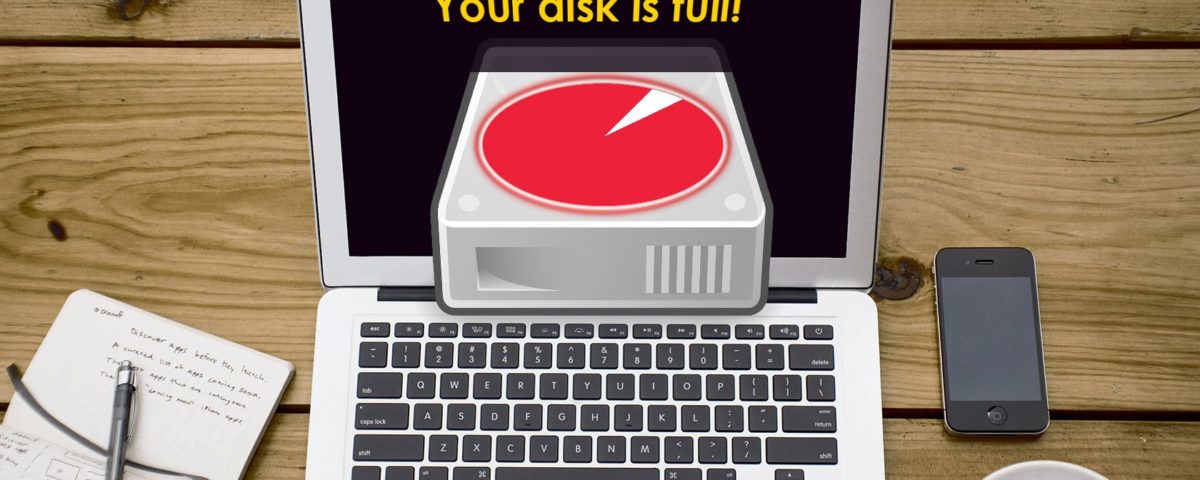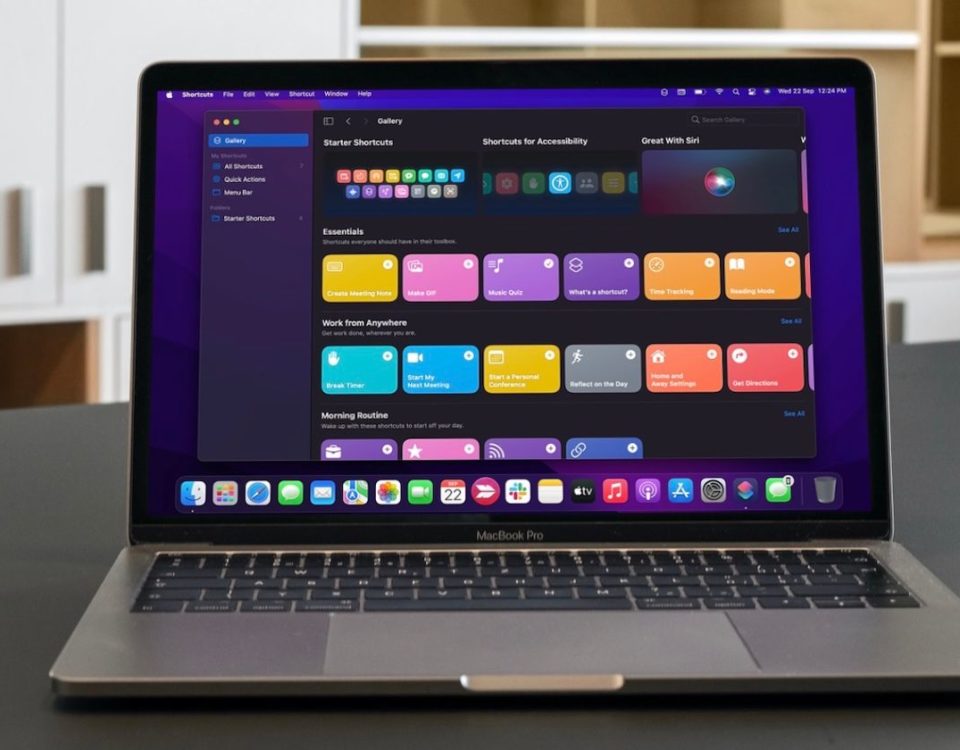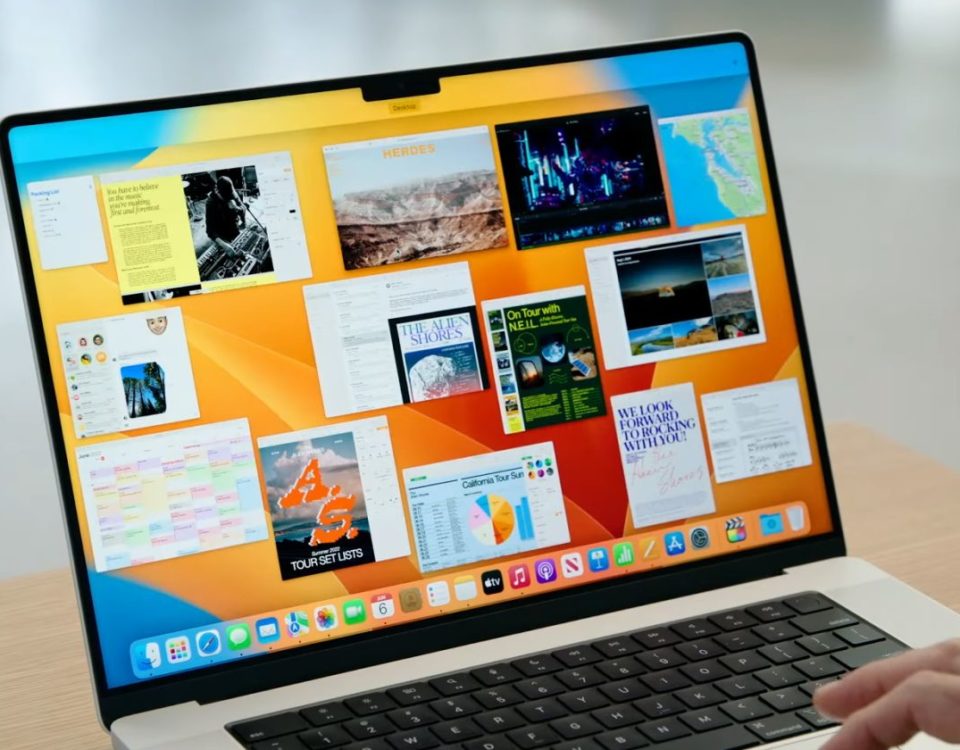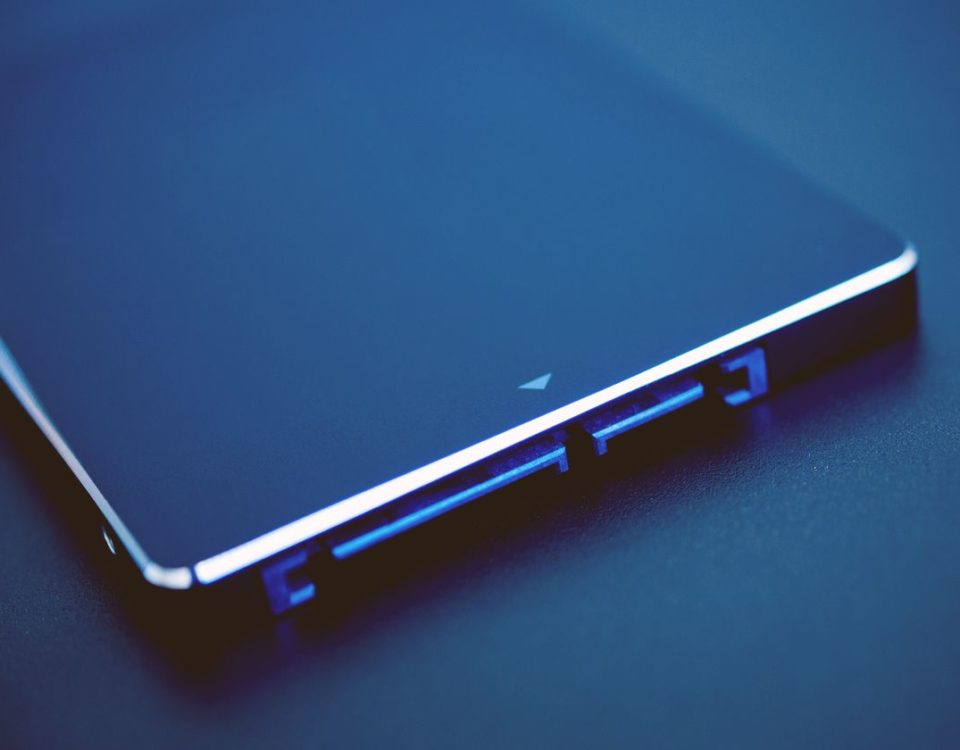The solid-state drive that came in your Mac is a double-edged sword. SSDs make computers incredibly fast. But because flash storage is expensive, the base iMacs and MacBooks still ship with a pretty small 256GB SSD. And upgrading to a bigger SSD costs hundreds of dollars.
If you’re stuck with limited storage space, you’ll need to be proactive. Take a look at these steps you can take (and later automate) to free up valuable storage space on your Mac. This way, your Mac won’t throw up the scary «Your disk is almost full» banner next time you’re downloading a big file.
1. Empty the Trash
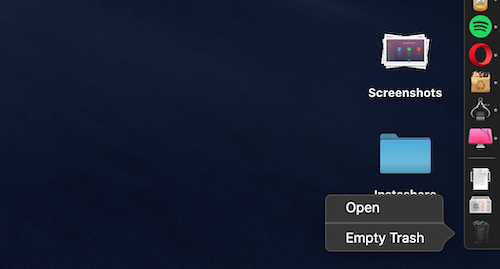
Did you know that macOS doesn’t automatically delete items from the Trash? There’s a chance that you’ve got a few gigabytes of data just sitting in it. On your Dock, right-click on the Trash icon and select Empty Trash. Once the data is deleted, you won’t be able to access it again.
To automatically empty the Trash on a schedule, go to Finder > Preferences > Advanced and tick Remove items from the Trash after 30 days.
2. Uninstall Apps You Don’t Use
If you’re the kind of person who reads tech websites, you might like trying new Mac apps just to see what they’re about. But it’s easy to forget to delete them when you’re done testing.
Start by taking stock of what’s on your machine. You’ll need to download a free app called AppCleaner (yes, it’s ironic that you need to download an app for this, but trust us, it’s worth it). AppCleaner is the best way to uninstall apps on Mac because it automatically deletes all junk files related to the app.
Open AppCleaner, browse through the list, click on an app you don’t need, and press the Remove button.
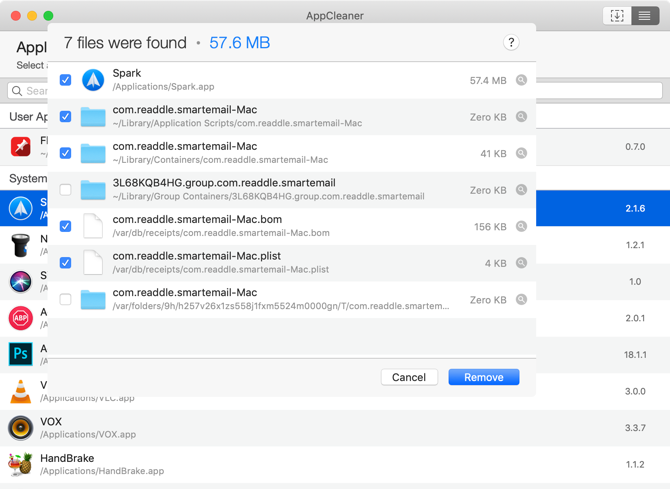
If you’re on macOS Sierra and higher, you’ll be glad to know that macOS has a built-in storage management feature (which we’ll refer to multiple times in this guide).
Click on the Apple icon from the menu bar, select About This Mac, and go to the Storage section. From here, click on Manage.

Click on the Applications button. You’ll see a list of all apps, sorted by how much space they take up. Select one or multiple apps you want to uninstall and click on Delete.
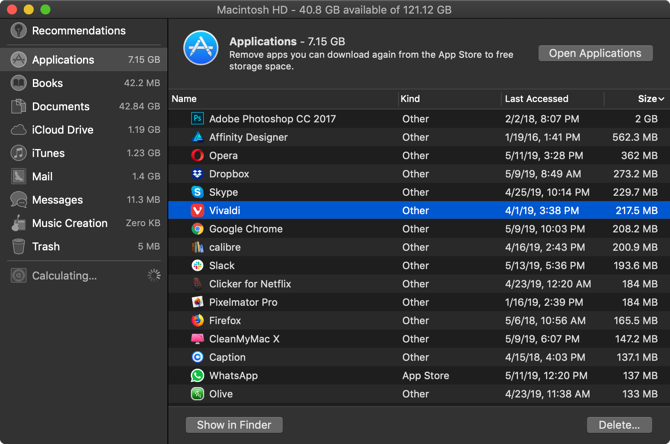
The app and app data will be sent to the Trash. Empty the Trash, and you’ve just gained a significant chunk of space back.
3. Find and Delete Large Files
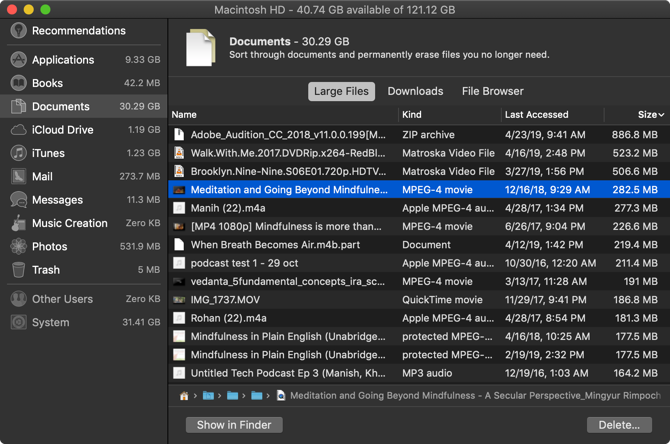
From the same Storage Management window, click on the Documents option from the sidebar. Here you’ll see a list of all your files, sorted from biggest to smallest.
The best way to reclaim a big chunk of storage space is to remove a couple of huge files. Weeding through hundreds of small files takes a lot longer. Take a look at the files at the top of the list and see if you can live without them. To delete a file, click on it and press the Delete button.
If you have space in your Dropbox or Google Drive account, you can move the file to your cloud storage to free up local storage.
Once the big files are out of the way, it’s time to drill down. A 1.5GB folder filled with photos you no longer need takes up just as much space as a 1.5GB video, but is much harder to find.
macOS makes this easier. On top of the Documents view, you’ll see two more options for sorting through files: Downloads and File Browser.
The Downloads section gives you a breakdown of files and folders that are older than three months, six months, or one year. So you can go through files that you haven’t accessed in a long time, and decide if you want to get rid of them.
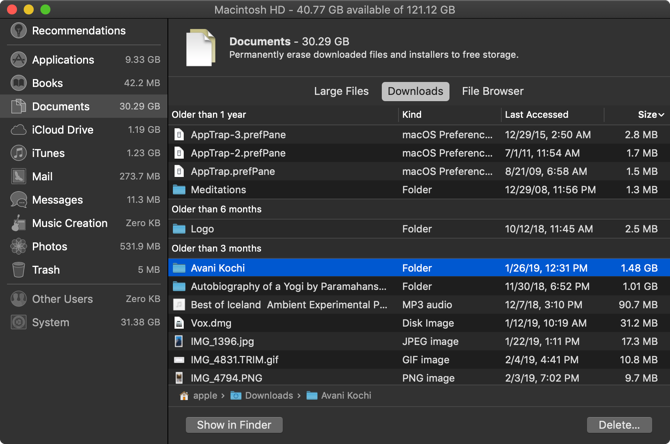
The File Browser section is basically a Finder view in the storage management tool. You can browse through your entire file storage system and find files or folders that you want to delete.
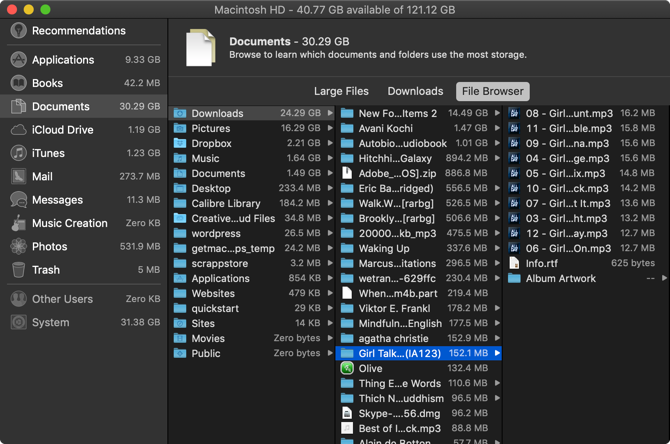
4. Delete Old iTunes Files and iOS Backups
If you back up your iPhone or iPad to your Mac, the backups could take up gigabytes of storage space. In the Storage Management window, click on the iOS Files section. Once you’re sure you want to delete your iOS device backup, click on it and press the Delete button.
In a similar fashion, if you’re using an older Mac you can delete data from the iTunes app from the iTunes section. Movies, TV shows, and audiobooks will show up here. On up-to-date Macs, you’ll see separate sections for things like music and podcasts.
5. Take a Look at Cloud Storage Apps
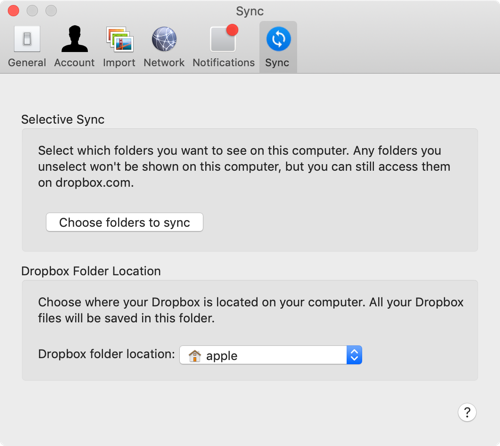
If you’re using the Dropbox or Google Drive app to sync your Mac files to the cloud, take a look at what exactly is stored on the cloud, and what’s on your Mac. By default, the cloud syncing services have a tendency to download all data to your Mac.
If you’re using Dropbox, switch to the Selective Sync feature. It lets you choose which folders to download onto your Mac’s drive.
Go to Preferences > Sync and click on the Choose Folders to Sync button. Go through this list and remove any folders that you don’t absolutely need. Remember, you can always access your Dropbox data from the website or mobile app.
6. Optimize Storage in the Photos App
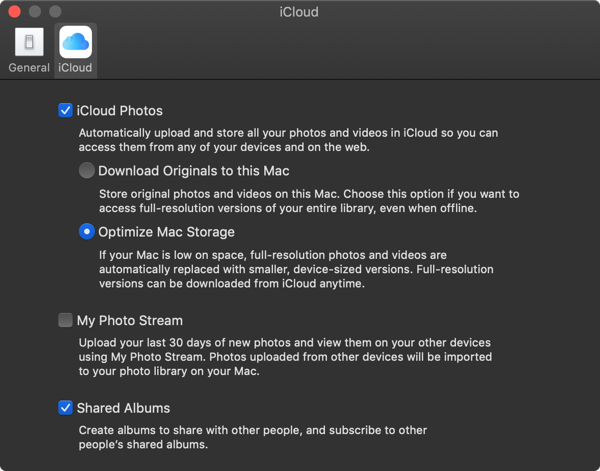
If you pay for a 50GB or 200GB iCloud Drive tier, consider using the Optimize Storage feature for the Photos app.
The Optimize Storage feature in Photos works exactly as it does on iPhone. Instead of keeping your entire iCloud Photo Library on the device, it will only keep the most recent photos, along with low-resolution thumbnails of older photos.
When needed, your computer will download photos from iCloud. This little feature can help reduce your Photos library from tens of gigabytes to just a couple.
Open the Photos app, go to Preferences > iCloud > iCloud Photos, and select the Optimize Storage option to turn it on.
7. Store Desktop and Documents in iCloud
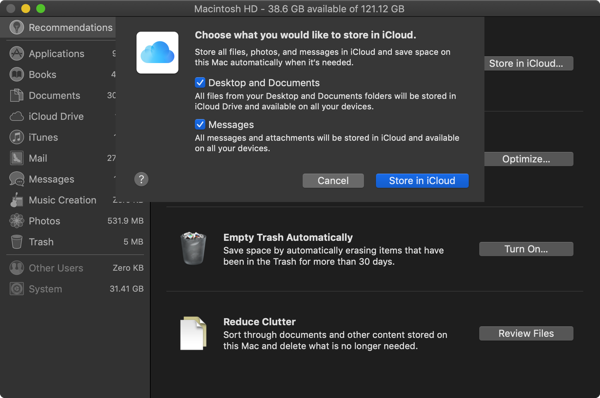
The Store in iCloud feature automatically backs up all the data from your Desktop and Documents folders, and only stores the most recent files locally. When needed, you can download the old files with the press of a button.
While this feature is neat, it’s not the most reliable option. If your important work files are stored in your Documents folder, we would recommend you don’t use this feature. But for most users, enabling this feature can free up a good amount of storage space.
To enable it, open the Storage Management screen, and click on Store in iCloud button from the Recommendations section.
8. Automate Using CleanMyMac X and Gemini 2
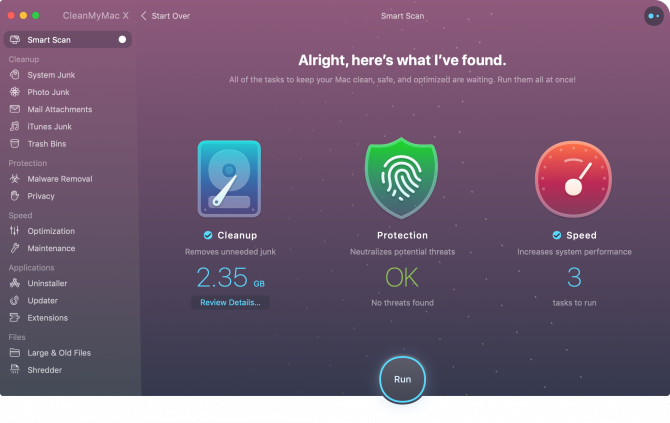
The manual cleanup method is effective (we were able to delete more than 30GB using the steps outlined above), but doing it repeatedly becomes time-consuming. And if you’re a Mac power user, you may need to do so every month.
Thankfully, certain apps can help simplify some of these steps and automate Mac maintenance. CleanMyMac X is an all-in-one utility to keep your Mac in top shape. It helps you delete cache files, temporary files, and applications. It has an intelligent file browser that will help you get rid of old and unused files as well.
CleanMyMac X’s sister app, Gemini 2, specializes in finding duplicates. There’s a fair chance that you have two copies of the same photos (or three similar-looking photos), documents, or videos. Gemini 2 finds duplicate files on your Mac and helps you get rid of them.
Download: CleanMyMac X ($40 per year | $90 one-time purchase)
Download: Gemini 2 ($20 per year | $45 one-time purchase)
Clear Disk Space on Your Mac
Now that you’ve freed up some storage space, you can start using your Mac to get work done. Follow these steps once in a while, and you shouldn’t have to worry about low disk space anymore.
There are more little changes you can make to improve your everyday experience of using a Mac. Find out how to put the Dock on the right edge, use Stacks to organize your desktop, and start using Spaces for a more organized desktop space.
Read Next
About The Author



